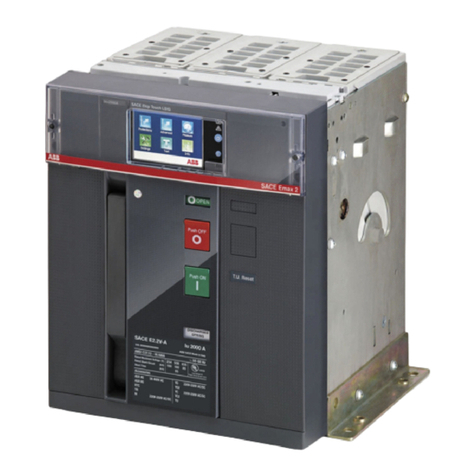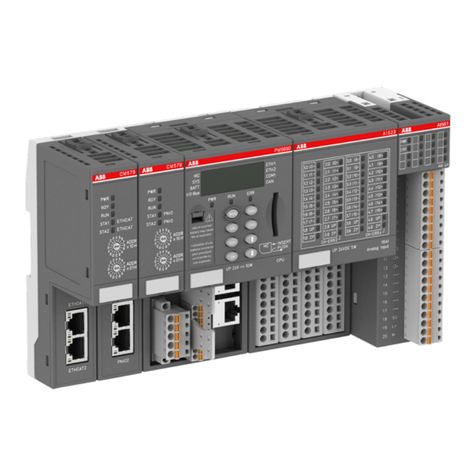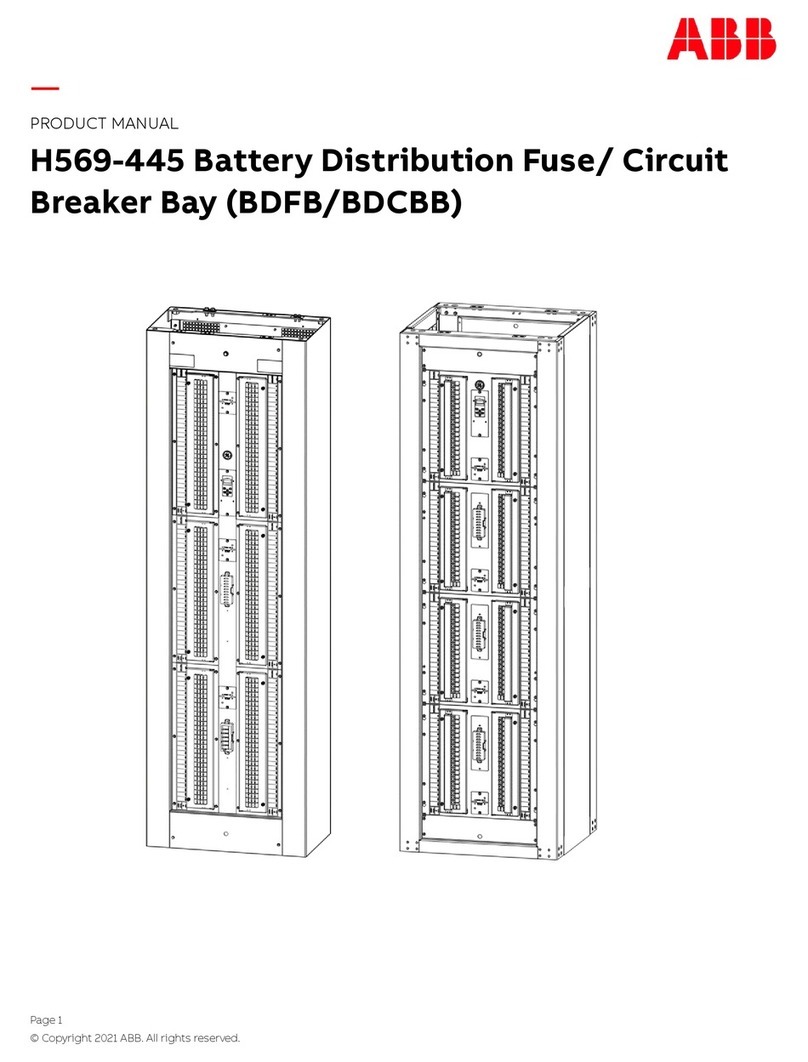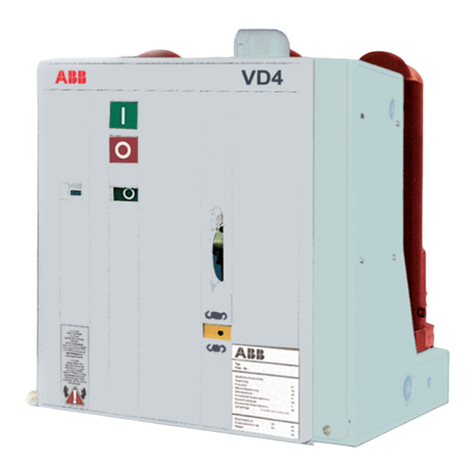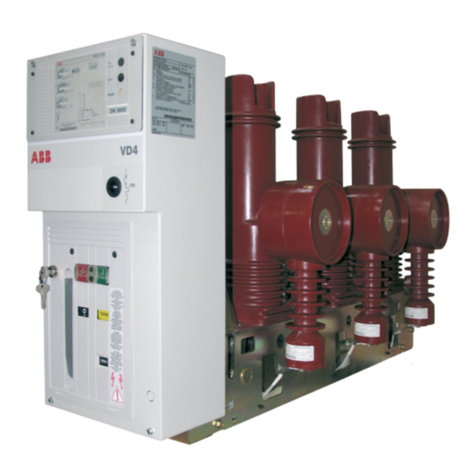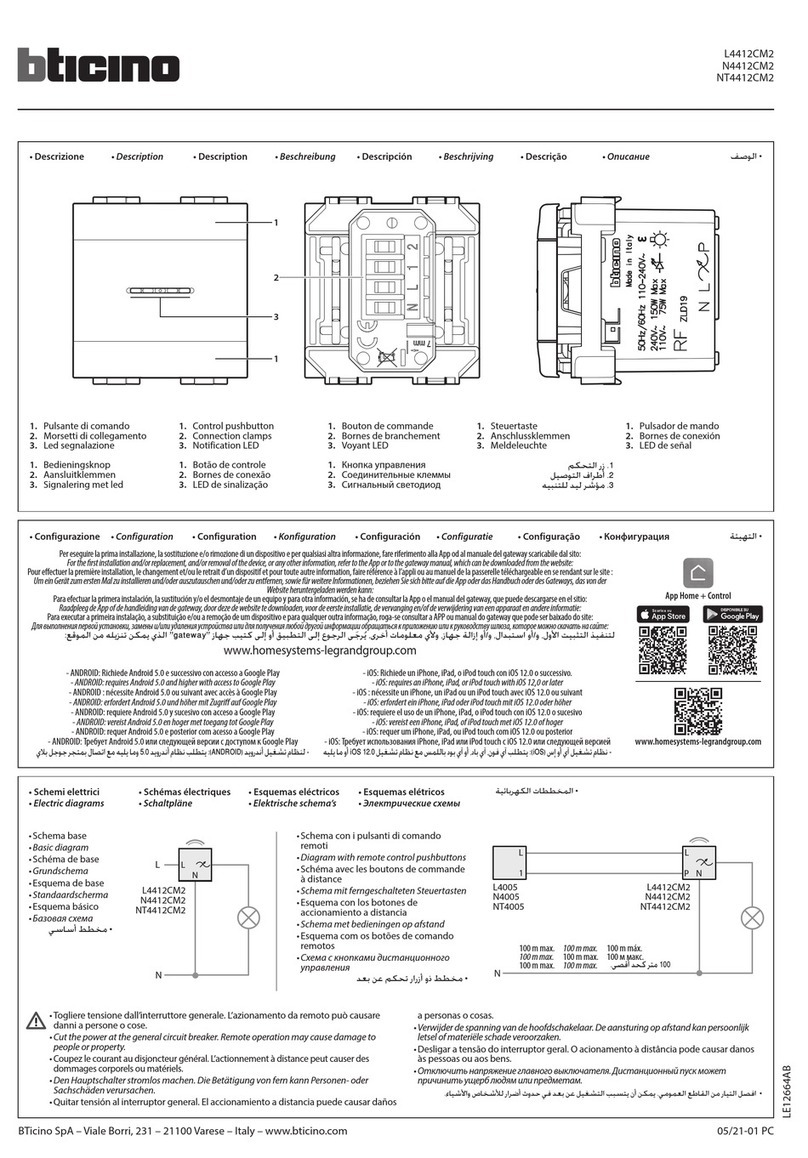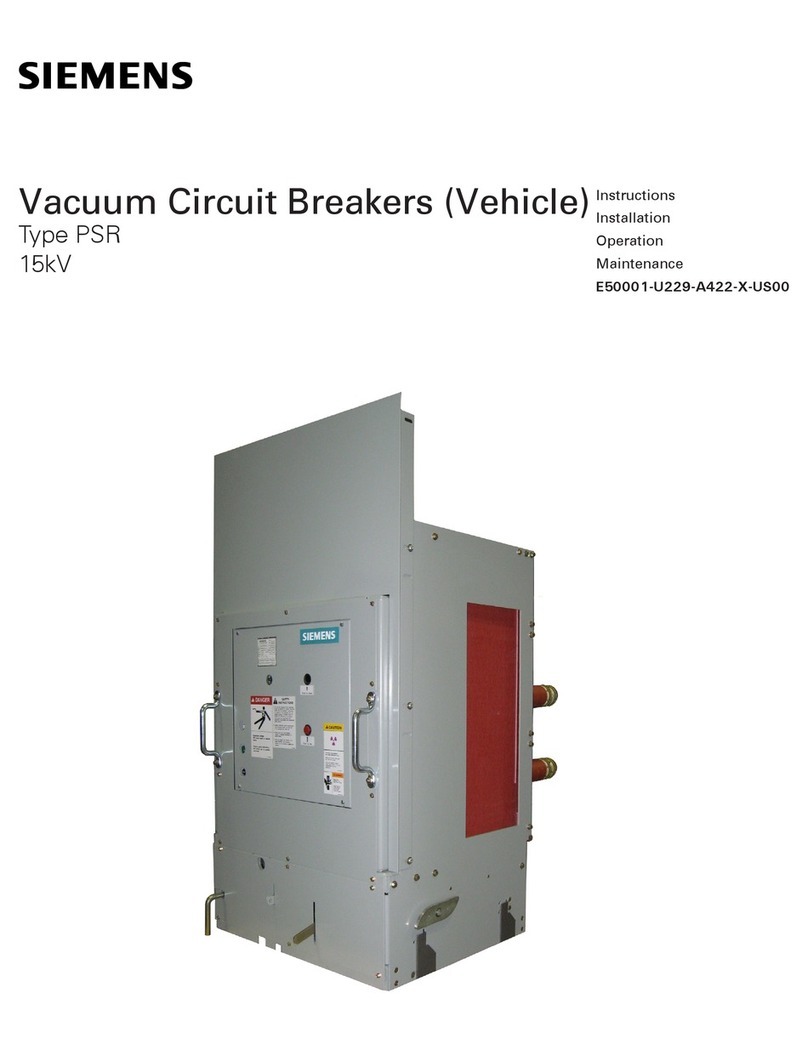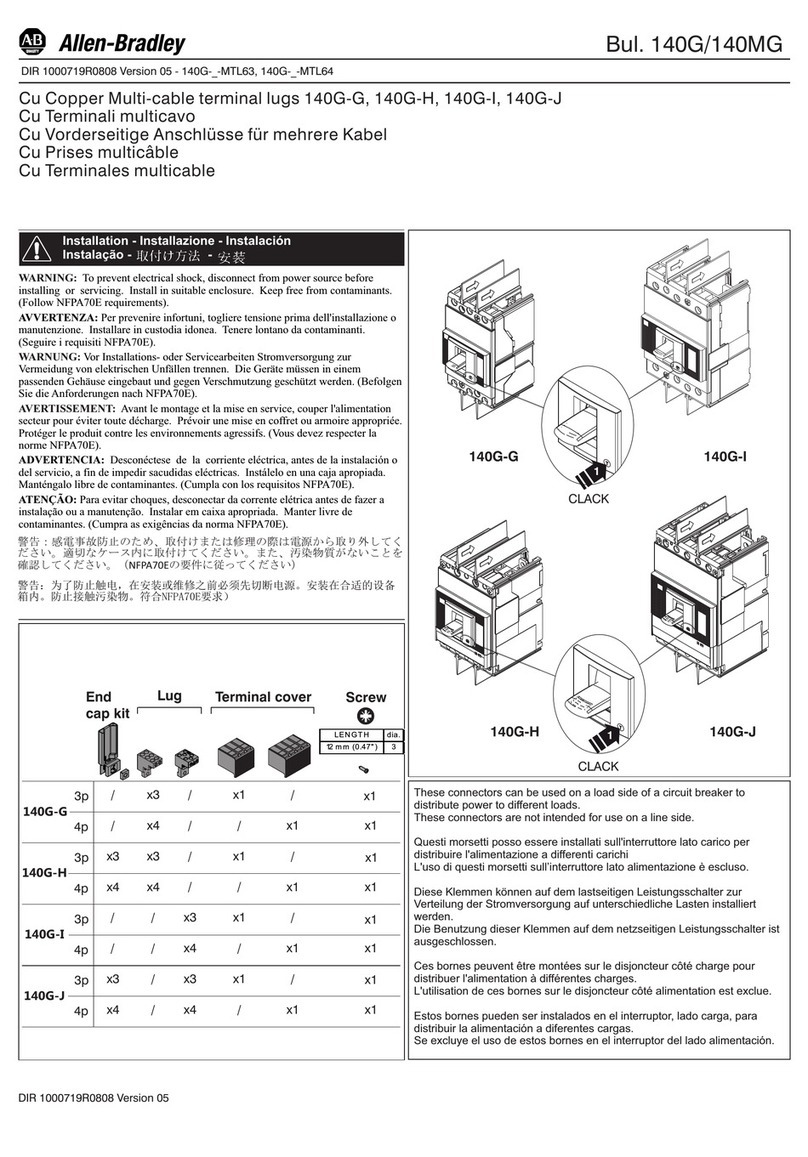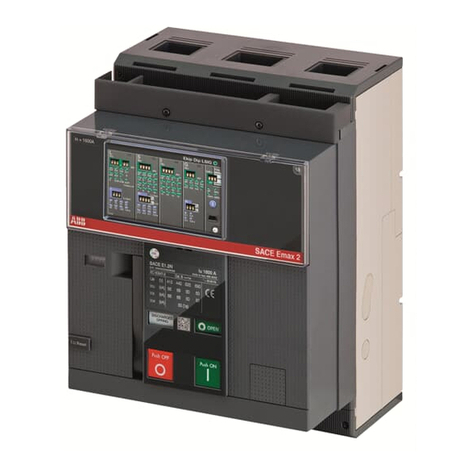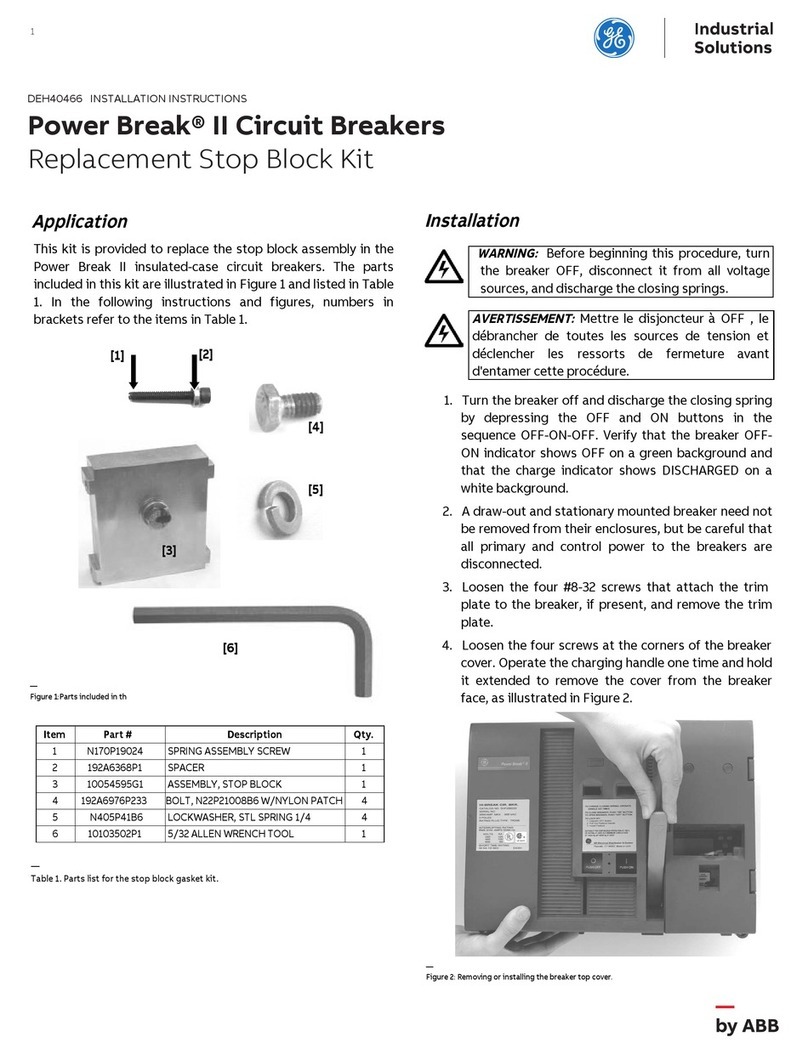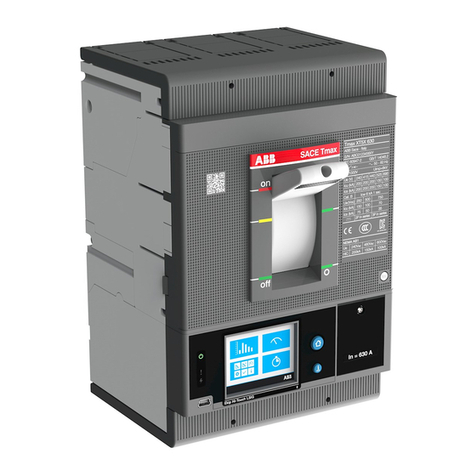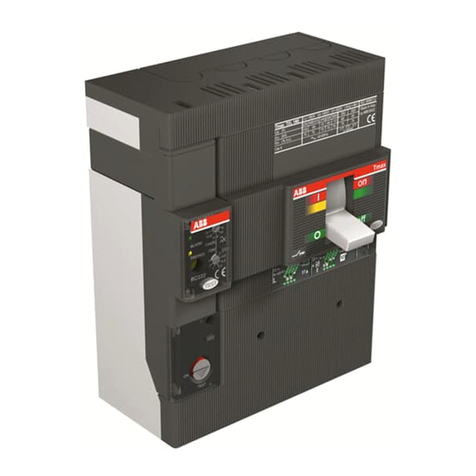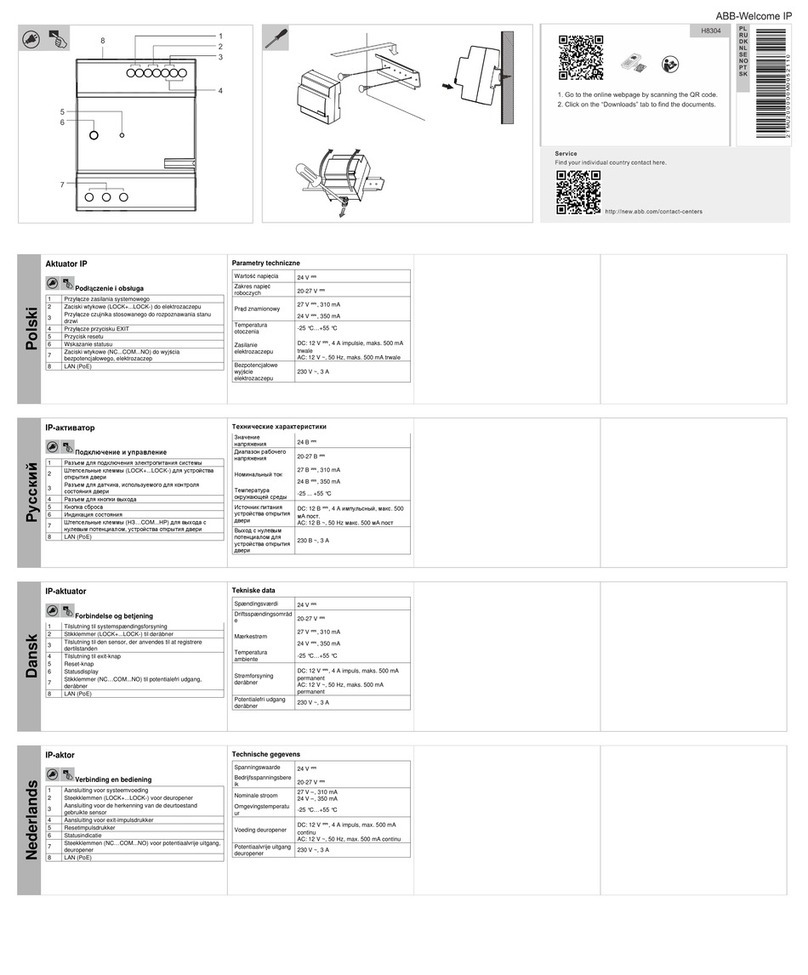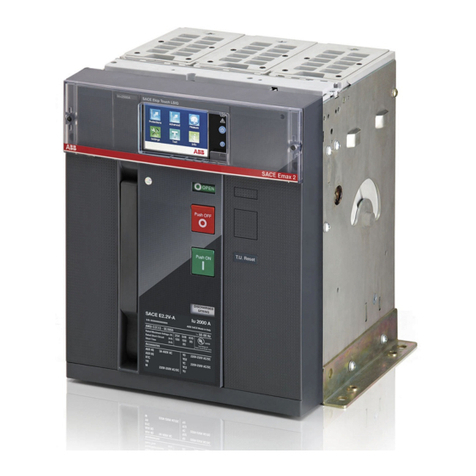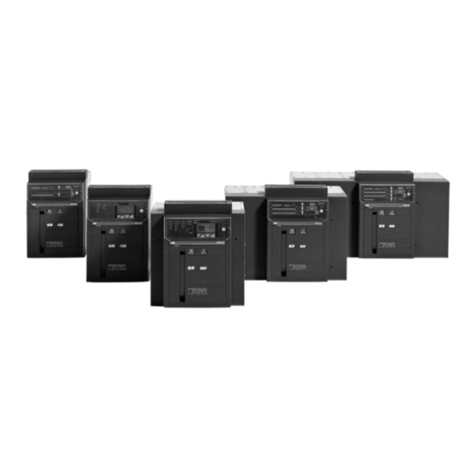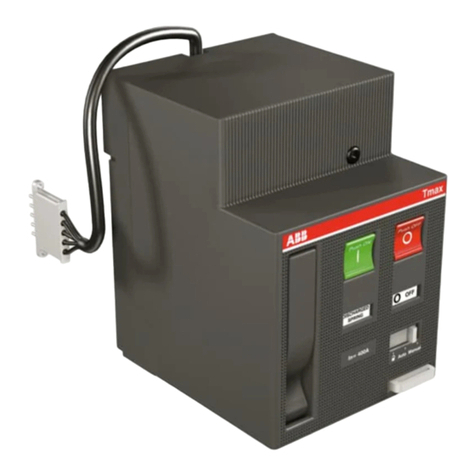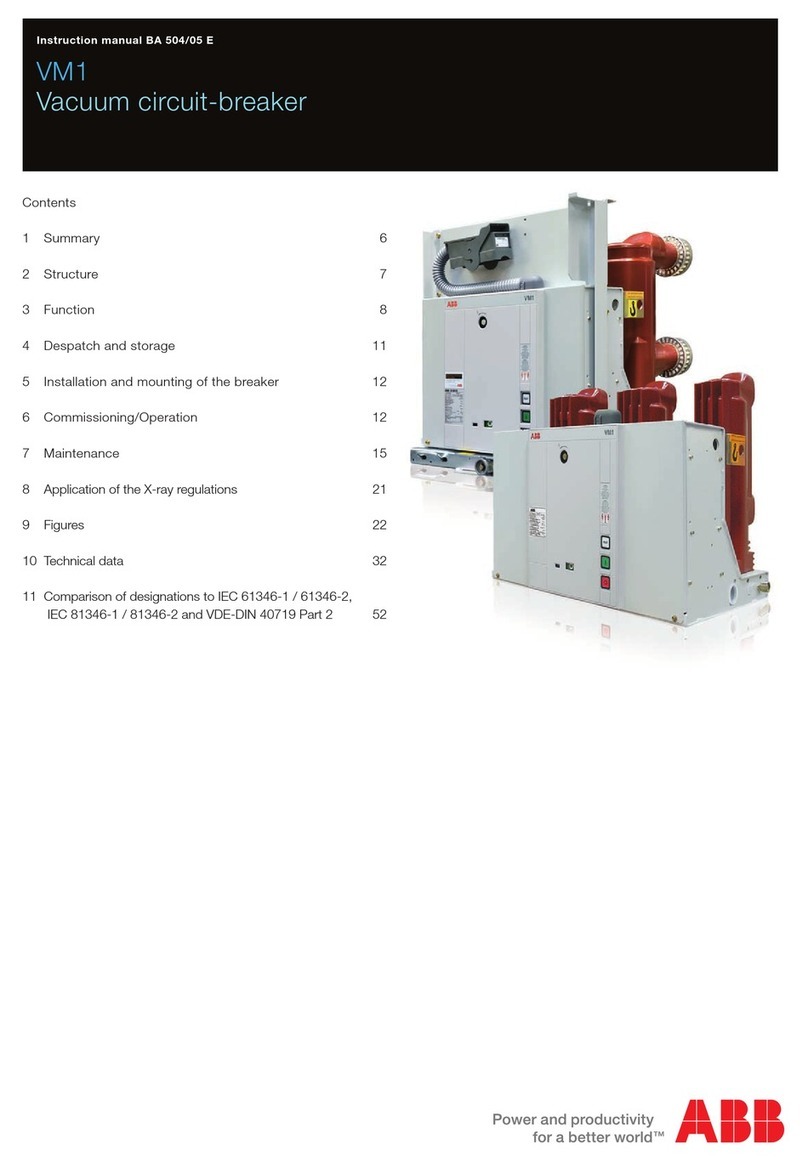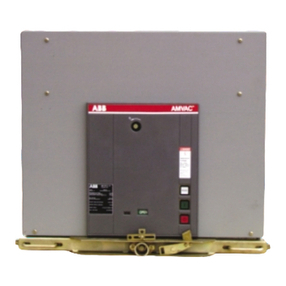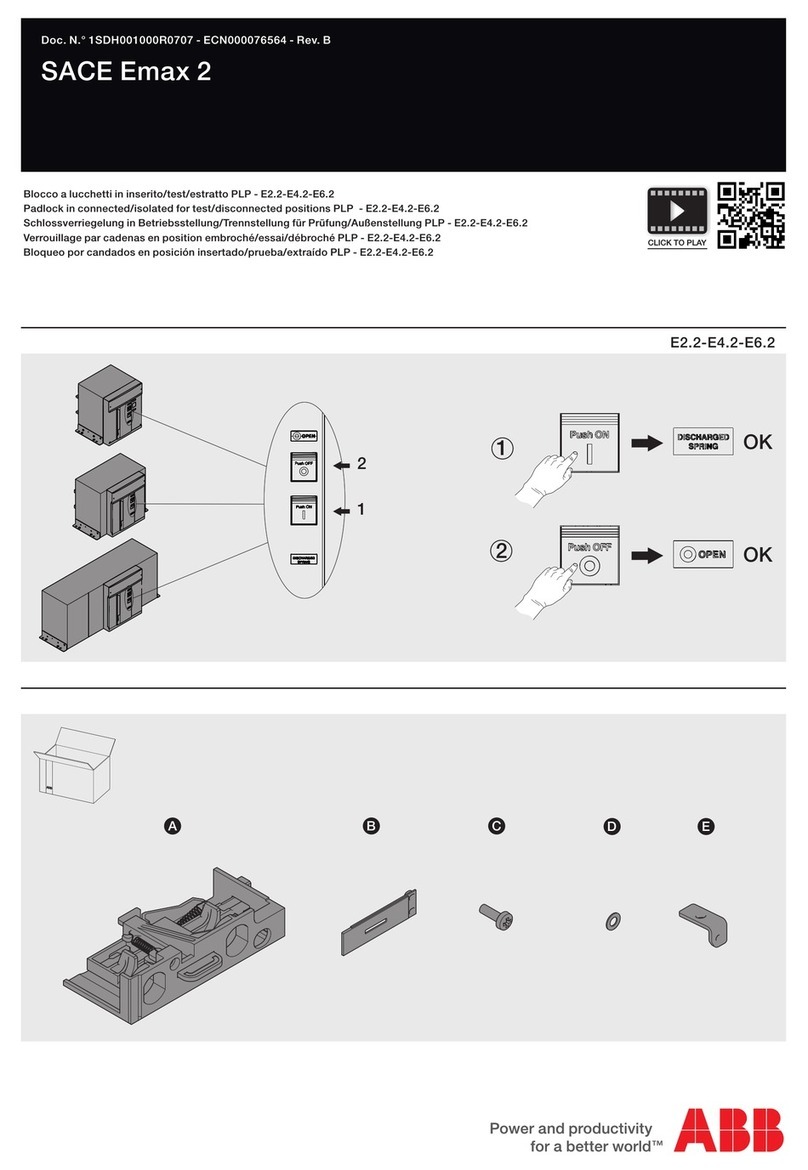
88
5. Description
5.1. General
The eVD4 series of vacuum circuit-breakers are apparatus
for indoor installation. For the electrical performances, please
refer to the corresponding technical catalogue.
For special installation requirements, please contact ABB.
The following versions are available:
– fixed
– withdrawable for UniGear ZS1 switchgear and PowerCube
units.
Vacuum circuit-breakers have particular advantages when
used in systems with a high operation frequency and/or which
involve a certain number of short-circuit interruptions. The
eVD4 vacuum circuit-breakers comprise the circuit-breaker,
sensor, protection and control functions in a single solution.
eVD4 circuit-breakers include an RBX615 relays and current
and voltage sensors. The multi-function RBX615 unit is
an Intelligent Electronic Device (IED), has a vast range of
protection and control functions and makes the eVD4 a
complete product, able to satisfy the needs of modern electric
installations.
The “combisensor” version sensors allow simultaneous and
precise measurements of both current and voltage. Integration
of the multi-purpose electronics and of the sensors on board
the circuit-breaker is done in the factory and is followed
by a careful testing stage which allows the functionality
of the whole system to be checked before the product is
sold. These checks, together with the many self-diagnosis
functions of the IED make the eVD4 stand out for their highly
reliable operation and low maintenance required.
eVD4 vacuum circuit-breakers are derived from the VD4
series of which they possess the same reliability and sturdy
construction.
5.2. Reference standards
The eVD4 vacuum circuit-breakers conform to the
specifications of the following Standards:
– IEC 62271- 100 VDE 0670 part 1000
– IEC 62271-1 DIN VDE 0670 part 104
– IEC 61000-4 DIN VDE 0847 part 4
– IEC 60255-26
– IEC 60044 -7 -8
5.3. Composition
The eVD4 circuit-breaker is a system consisting of:
– vacuum circuit-breaker with mechanical stored energy and
free release operating mechanism (5)
– RBX615 electronic unit to carry out the protection, control,
measurement, monitoring and self-diagnosis functions (3)
– embedded sensors for current and voltage measurement (2)
– Human Machine Interface (HMI), allowing all the RBX615
functions to be managed from the low voltage compartment
door.
– Web HMI, allowing most of the HMI functions to be used by
means of
a web browser.
The actuator works on the circuit-breaker poles by means of
special kinematics. The operating mechanism springs provide
the energy needed to activate the driving gear.
The circuit-breaker operating position is monitored thanks to
two inductive sensors
The basic circuit-breaker version also has the following
instruments:
– manual device for loading the operating mechanism
– mechanical open/closed state indicator
– mechanical indicator of springs loaded
– mechanical operation counter
– opening and closing pushbuttons.
The withdrawable version has a truck (15), either manual or
motorized, consisting of a steel sheet structure with wheels,
on which the circuit-breaker is installed with the relative
auxiliary components, the isolating contacts for electric
connection with the switchgear and the multi-pole connector
for connection of the circuit-breaker auxiliary circuits.
After being racked into the switchgear and hooked up,
the withdrawable circuit-breaker functions in the following
positions: racked-out, isolated for test (with the connector
inserted) and racked-in.
The racked-in circuit-breaker is automatically earthed by
means of the truck wheels.
The mechanical actuator of the circuit-breaker and the relative
operating pushbuttons are accessible from the front.
Withdrawable circuit-breakers of the same type and
characteristics are interchangeable, but the connector coding
prevents incorrect combinations between circuit-breaker and
switchgear.
5.3.1. Structure
Fixed circuit-breaker (fig. 4/a)
Withdrawable circuit-breaker (fig. 4/b).
